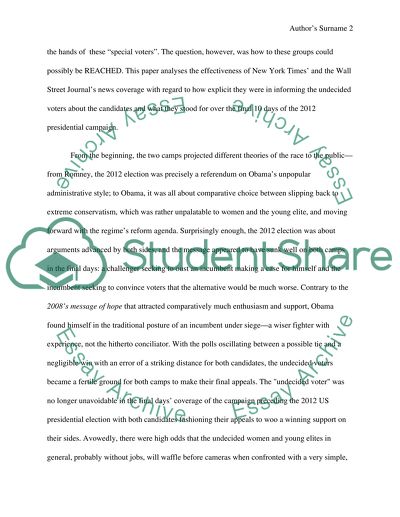Cite this document
(“The Press and Presidential Politics Essay Example | Topics and Well Written Essays - 2000 words”, n.d.)
The Press and Presidential Politics Essay Example | Topics and Well Written Essays - 2000 words. Retrieved from https://studentshare.org/journalism-communication/1462105-the-press-and-presidential-politics
The Press and Presidential Politics Essay Example | Topics and Well Written Essays - 2000 words. Retrieved from https://studentshare.org/journalism-communication/1462105-the-press-and-presidential-politics
(The Press and Presidential Politics Essay Example | Topics and Well Written Essays - 2000 Words)
The Press and Presidential Politics Essay Example | Topics and Well Written Essays - 2000 Words. https://studentshare.org/journalism-communication/1462105-the-press-and-presidential-politics.
The Press and Presidential Politics Essay Example | Topics and Well Written Essays - 2000 Words. https://studentshare.org/journalism-communication/1462105-the-press-and-presidential-politics.
“The Press and Presidential Politics Essay Example | Topics and Well Written Essays - 2000 Words”, n.d. https://studentshare.org/journalism-communication/1462105-the-press-and-presidential-politics.


